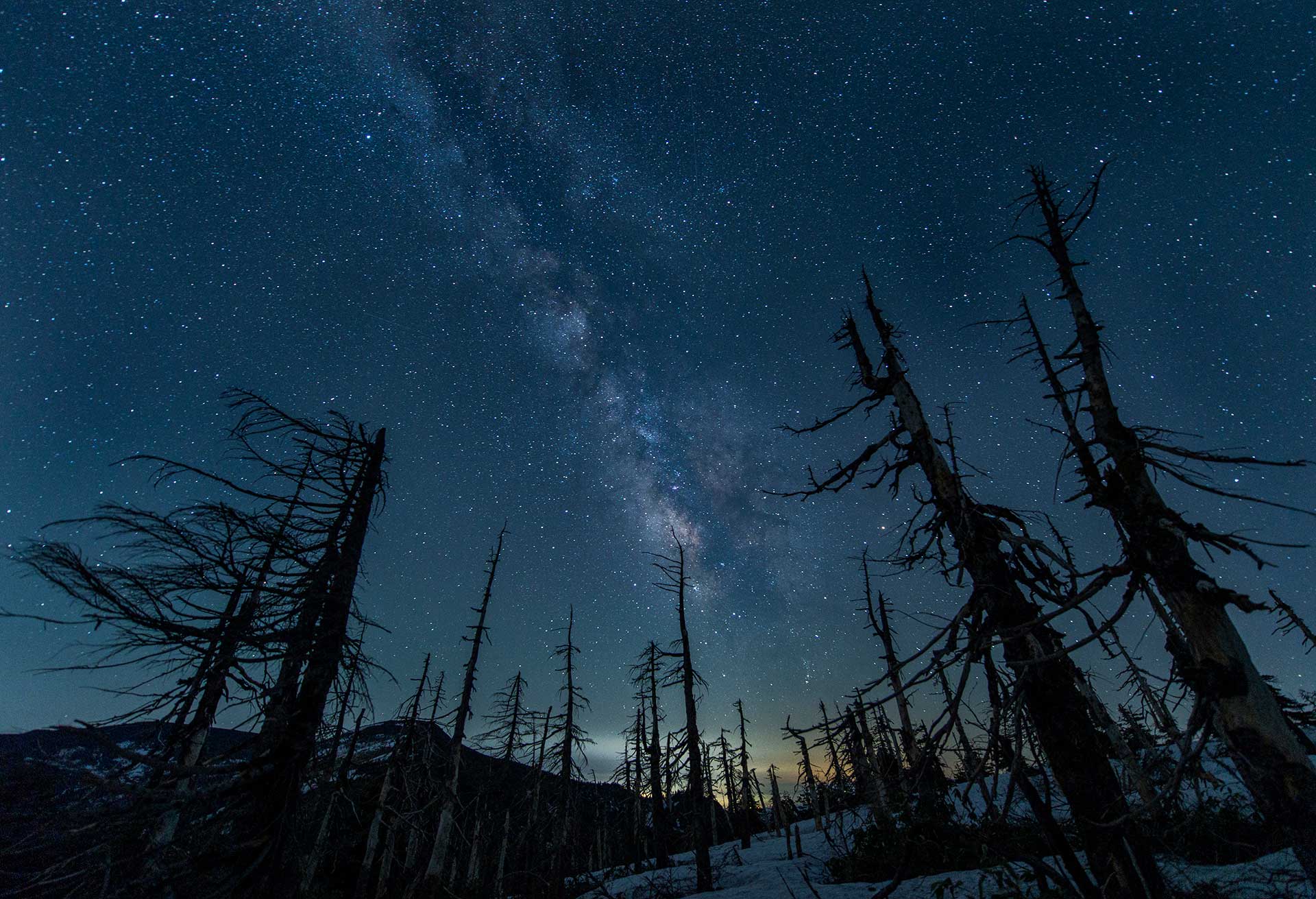KAZUAKI KOSEKI
"THE 9TH STATION OF MT. ZAO ON THE BORDER OF YAMAGAT AND MIYAGI PREFECTURES"
Zao on the border of Yamagata and Miyagi prefectures, you can see a rare winter phenomenon called “juhyo,” or tree ice. Juhyo are called “snow monsters” because of their unusual shape. It is created when strong, moist winds and large amounts of snow brought by the winter monsoon repeatedly blow snow and ice onto the aomori-todomatsu (Abies sachalinensis), a type of fir native to Japan. Currently, an infestation of midges and moths has resulted in the death of numerous Aomori ash trees. In a wide area several hundred meters above sea level near the ninth station, where the damage is most severe, nearly all the trees have died. At the same time, global warming has caused a marked rise in temperature, and this ice can only form at higher elevations year after year. I have continued my research by photography and fieldwork over the past seven years. On a clear night at the end of May, when the snow had melted from the trees, I looked up wistfully at the withered ice and the starry sky, and continued to gaze at these trees, clasping my hands and praying. Global warming and climate change are believed to be one of the reasons for the death of these trees. Other possible reasons include the impact of tourism development and attraction of tourism. The two places where the dead trees spread have one thing in common: they are places where people come for tourism. Light, heat, and carbon dioxide from cars are much more sensitive in high mountains than in lowlands. Projects are currently being initiated to regenerate these trees. Global warming causes many problems, but hopefully these trees will regrow in the future, hundreds of years from now.
